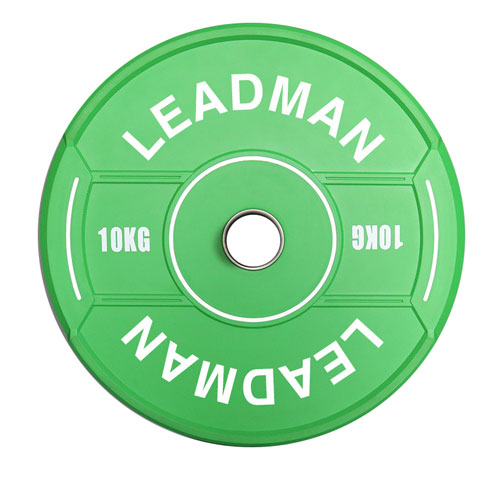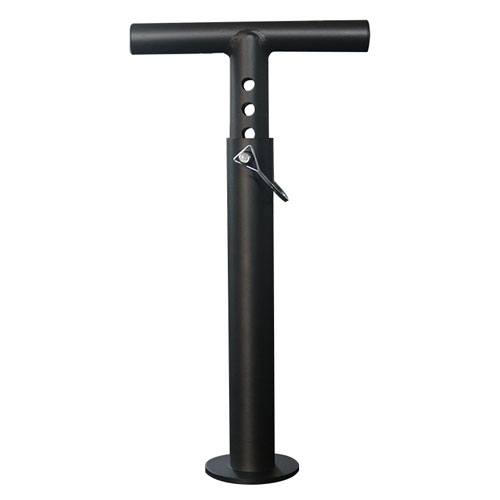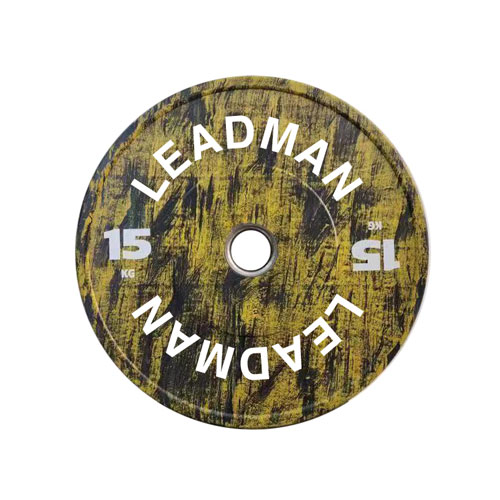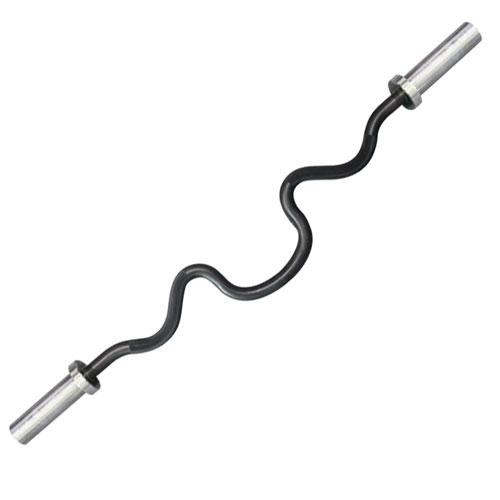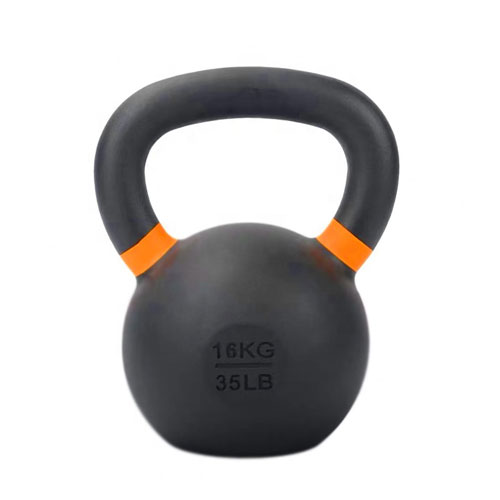Roest verwijderen van je barbell: Een uitgebreide gids

A rusty barbell is a common sight, particularly in home gyms where equipment might not receive the same level of care and attention as in a commercial setting. The damp air, fluctuating temperatures, and occasional spills can all contribute to the formation of rust on your cherished weightlifting apparatus. This isn't just an aesthetic issue; a rusty barbell poses significant safety risks. Rust weakens the metal, potentially leading to fractures or breakage during use, resulting in serious injury. Furthermore, a compromised barbell can affect your workout, making it difficult to maintain proper form and potentially hindering your strength gains.
This blog post will equip you with the knowledge and techniques to effectively remove rust from your barbell, restoring its functionality and safety. We'll explore a range of methods, from simple home remedies to more advanced techniques. However, it's important to set realistic expectations: some rust damage may be too extensive for DIY solutions and might require professional intervention.
De schade beoordelen: Over hoeveel roest hebben we het?
Before embarking on any rust removal process, carefully assess the extent of the damage. Two main types of rust are crucial to identify:
Roest aan het oppervlak: This is characterized by a reddish-brown coating on the barbell's surface. It’s usually relatively easy to remove and doesn't significantly compromise the barbell's structural integrity. Surface rust often appears as a thin layer, easily scraped off with a fingernail.
Putroest: This is more serious. Pitting rust involves the corrosion penetrating deeper into the metal, creating pits and holes. This weakens the barbell considerably and poses a higher risk of failure during use. Pitting rust is often darker and more ingrained in the metal than surface rust.
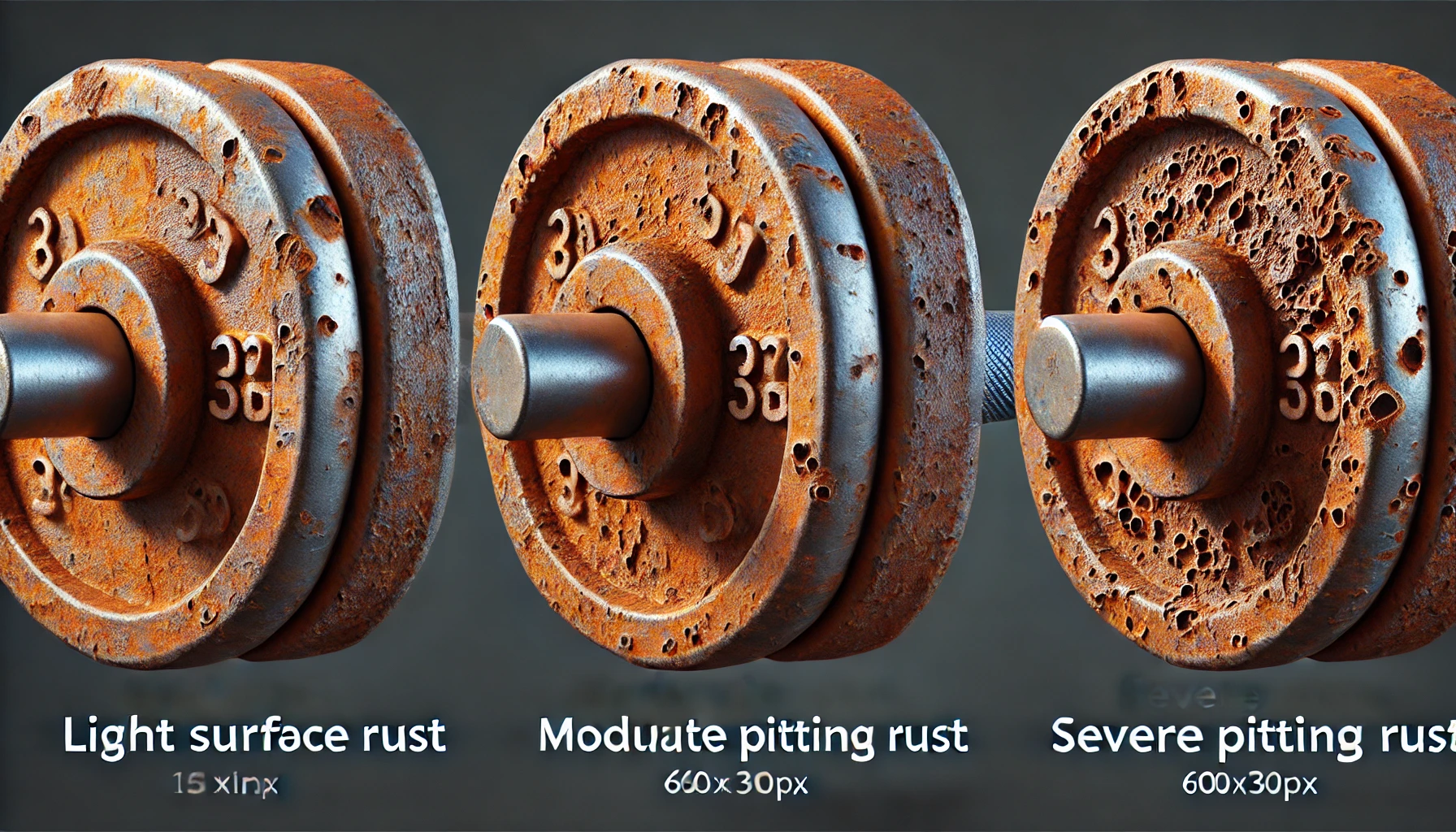
Over hoeveel roest hebben we het?
De keuze van de reinigingsmethode wordt bepaald door de ernst van de aanslag. Lichte oppervlakteroest kan vaak worden aangepakt met eenvoudige reinigingstechnieken. Matige putroest kan een agressievere aanpak vereisen, terwijl ernstige putroest vaak professionele hulp of vervanging van de staaf noodzakelijk maakt.
Veiligheid eerst: Beschermingsmiddelen en werkruimte
Bij het verwijderen van roest worden agressieve chemicaliën en schurende materialen gebruikt, waardoor veiligheid van het grootste belang is. Draag altijd het volgende:
- Handschoenen: Protect your hands from chemicals and sharp edges. Choose heavy-duty gloves suitable for the chosen method.
- Oogbescherming:Een veiligheidsbril beschermt je ogen tegen rondvliegend puin en spatten van chemische stoffen.
- Ademhalingsbescherming:Een stofmasker of ademhalingsapparaat is cruciaal, vooral bij het gebruik van schurend gereedschap of chemische verwijderaars, om te voorkomen dat je schadelijke deeltjes of dampen inademt.
Establish a well-ventilated workspace, ideally outdoors. If working indoors, ensure adequate ventilation to minimize exposure to fumes. Proper disposal of used materials is also crucial. Follow local regulations for disposing of chemical waste and sharp objects.
Methode 1: Eenvoudige reiniging - voor licht roest op het oppervlak
For barbells with light surface rust, a simple cleaning might suffice. This involves using a wire brush to physically remove the rust.
Draadborstel selecteren: Several types of wire brushes are available. Steel wool is effective but can leave scratches. Brass wire brushes are gentler and less likely to damage the barbell's finish. Choose the brush appropriate for the barbell's material and the severity of the rust.
Schoonmaakproces: Apply soapy water to the barbell. Using firm but controlled strokes, scrub the rusted areas with the wire brush. A scrubbing pad can augment the cleaning power, especially in crevices. Rinse thoroughly with clean water to remove all traces of soap and rust particles. Finally, dry the barbell completely with a clean cloth.
Methode 2: Azijn inweken - Een natuurlijke aanpak
Vinegar's acidity effectively dissolves rust. This method is suitable for moderate surface rust and is environmentally friendly.
Inweekproces: Submerge the rusty barbell in a container large enough to fully immerse it. Fill the container with white vinegar, ensuring the barbell is completely covered. The soaking time depends on the rust severity; light rust might only require a few hours, while heavier rust may need up to 24 hours or even longer.
Effectiviteit vergroten (optioneel): Adding salt to the vinegar solution enhances its rust-removing capabilities. The salt acts as an electrolyte, speeding up the chemical reaction.
Reiniging na het weken: After soaking, remove the barbell and rinse it thoroughly with water. Use a wire brush or scrubbing pad to remove any remaining loosened rust. Dry thoroughly.
Methode 3: Zuiveringszoutpasta - Zacht schuren
Voor kwetsbare plekken of lichtere roest biedt een pasta van zuiveringszout een zachtere aanpak.
Voorbereiding van de pasta: Mix baking soda with water to form a thick paste. Apply the paste to the rusted areas using a cloth or sponge.
Aanbrengen en schrobben: Gently scrub the paste onto the rusted surface using a soft-bristled brush or a non-abrasive cloth. Avoid excessive scrubbing, which could damage the barbell.
Spoelen en drogen:Spoel de halterstang grondig af met water om alle resten van de pasta te verwijderen en droog hem volledig af.
Methode 4: Commerciële roestverwijderaars - voor hardnekkig roest
Commerciële roestverwijderaars bieden sterkere oplossingen voor hardnekkige roest.
Productselectie: A wide array of commercial rust removers is available in gels, liquids, and sprays. Choose a product appropriate for your barbell material and the severity of the rust.
Veiligheidsmaatregelen: Always read and follow the manufacturer's instructions carefully. Wear appropriate protective gear (gloves, eye protection, respirator). Work in a well-ventilated area.
Toepassing: Apply the rust remover according to the manufacturer's instructions. This may involve brushing, spraying, or soaking. Allow sufficient time for the product to work its magic.
Verwijdering:Gooi gebruikte roestverwijderaar weg volgens de instructies van de fabrikant en de plaatselijke voorschriften.
Methode 5: Elektrolyse - De geavanceerde techniek
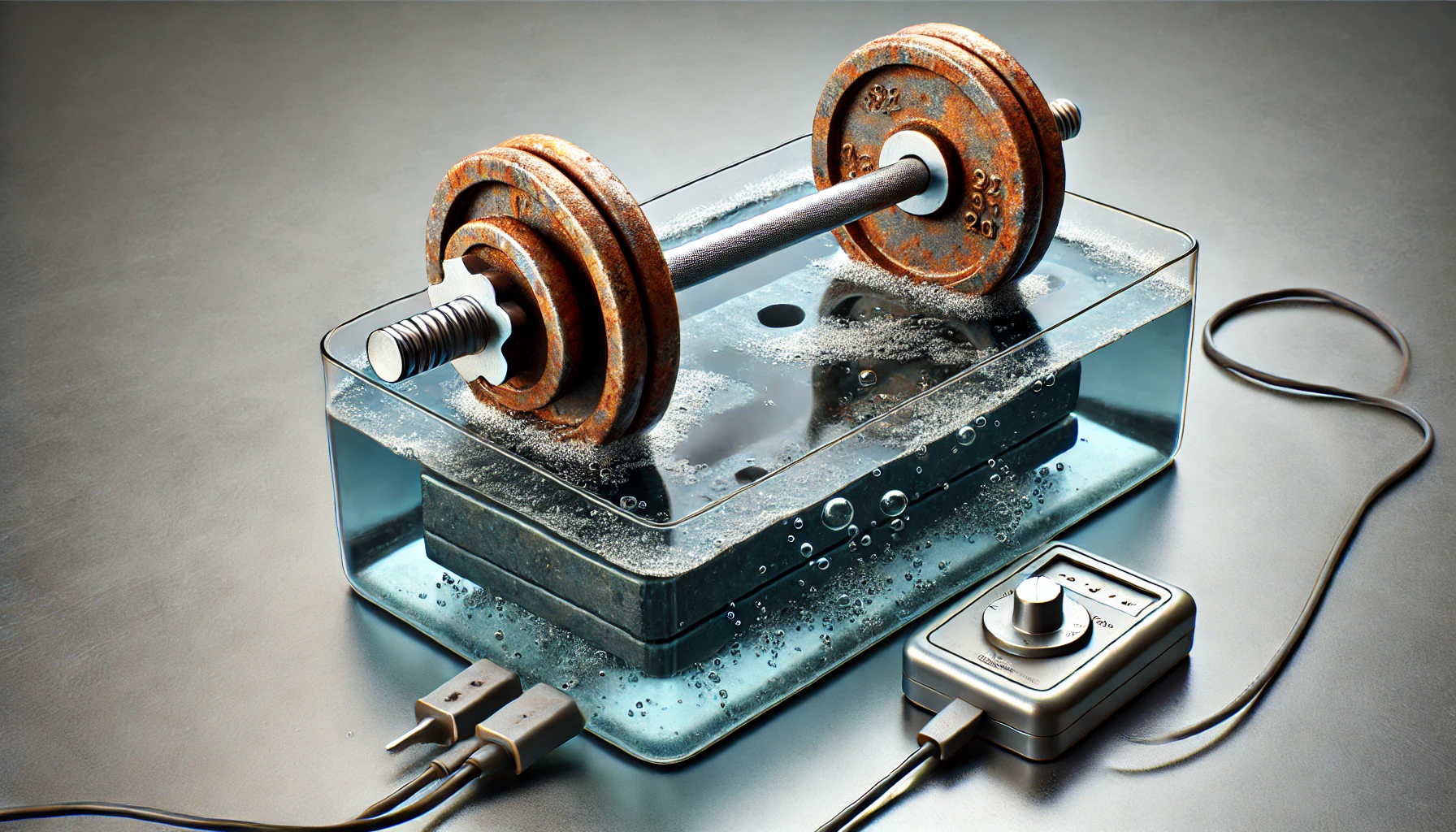
Elektrolyse - De geavanceerde techniek
Elektrolyse is een meer geavanceerde techniek die roest effectief verwijdert zonder het onderliggende metaal te beschadigen.
Proces Uitleg: Electrolysis uses an electric current to dissolve rust. The rusty barbell acts as the cathode (negative electrode), while another piece of metal (like a steel plate) serves as the anode (positive electrode). Both are submerged in an electrolyte solution (like baking soda and water). The current pulls the iron oxide (rust) from the barbell and deposits it on the anode.
Benodigde materialen:Je hebt een stroombron nodig (een acculader werkt goed), een bak voor de elektrolytoplossing, de elektrolytoplossing zelf, de roestige staaf (kathode) en een opofferingsanode.
Setup: Connect the positive terminal of the power source to the anode and the negative terminal to the cathode. Submerge both in the electrolyte solution, ensuring they don't touch.
Voordelen en nadelen:Elektrolyse is zeer effectief, vooral voor zwaar verroeste voorwerpen, maar het vereist meer gespecialiseerde apparatuur en technische kennis.
Nabehandeling: Uw barbell beschermen
Zodra de roest is verwijderd, is het van cruciaal belang om te voorkomen dat deze terugkeert.
Grondig drogen:Droog de halterstang volledig af om te voorkomen dat vocht verdere roestvorming veroorzaakt.
Beschermende coating: Apply a protective coating to prevent future rust. Options include oil (WD-40, gun oil) or specialized rust-preventative paint.
Wanneer professionele hulp zoeken?
If the rust damage is severe (extensive pitting, significant weakening of the metal), attempting DIY methods might be futile or even dangerous. In such cases, consider seeking professional help from a metal restoration specialist. They have the expertise and equipment to restore or replace severely damaged barbells.
Conclusie: Een roestvrije toekomst
Removing rust from your barbell requires careful assessment and the selection of an appropriate method. Simple cleaning is sufficient for light surface rust, while vinegar soaking, baking soda paste, or commercial rust removers can handle moderate rust. Electrolysis is an advanced option for heavily rusted barbells, but professional help may be necessary for extensive damage. Remember, preventing rust through proper storage and regular maintenance is key to keeping your barbell in optimal condition.
Verwijzen naar Blog >>Zo kies je de juiste opslagruimte voor halterschijven voor je sportschool

